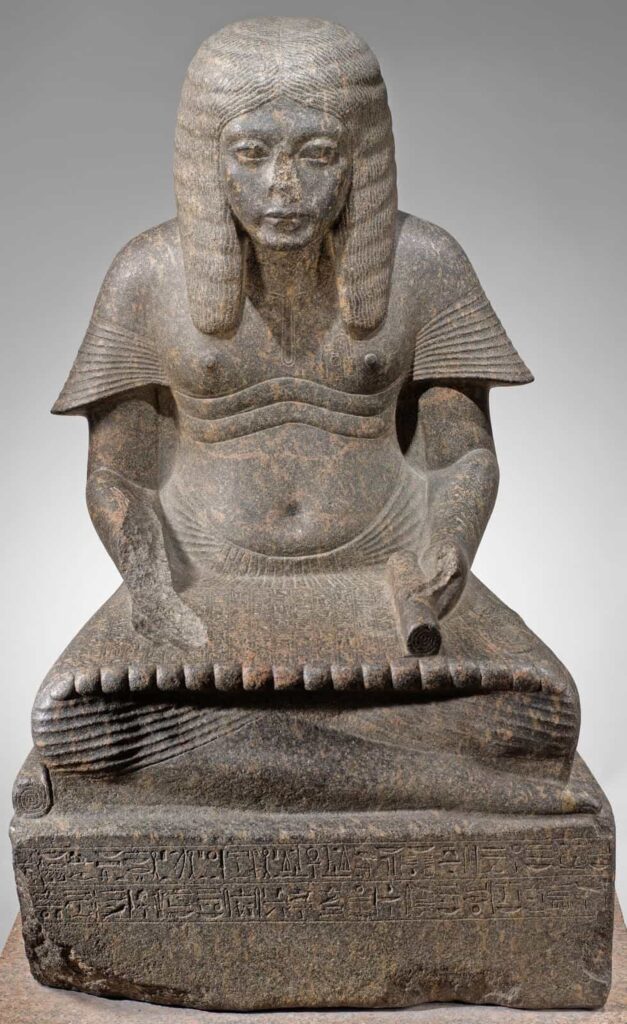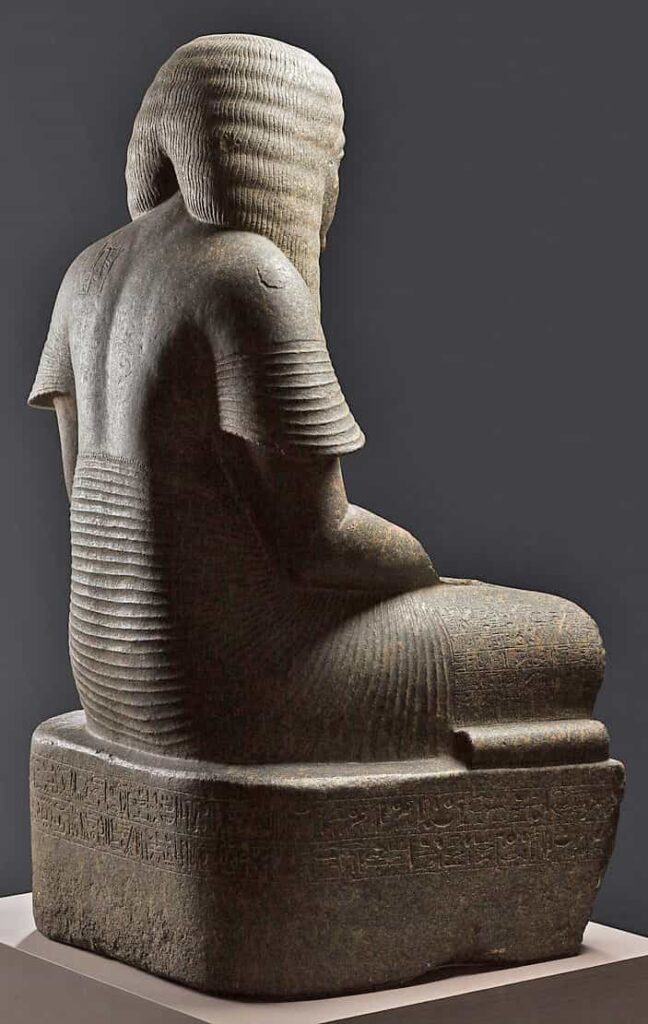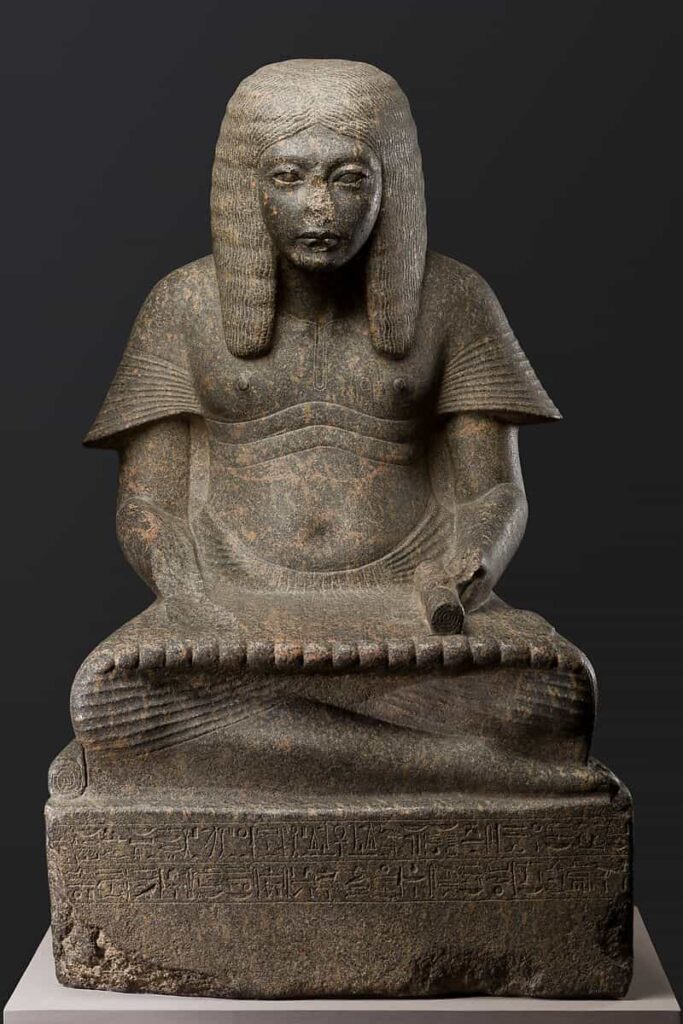The Statue of Horemheb in Scribe Position, also known as Horemheb as a Scribe of the King, is a sculpture dating back to approximately 1336 BC to 1323 BC, belonging to ancient Egyptian art.
The place and time of the discovery are unknown, but it is known that it was part of the collection of the Egyptian Egyptologist Roger Jean Khawan. The sculpture was put up for sale in the gallery of Egyptian antiquities “Khawam Brothers.”
Later, it was acquired by the American industrialist and philanthropist Valentine Everit Macy. Therefore, the sculpture remained in private hands until 1923 when it was donated by Valentine Everit Macy and his wife Edith Wiseman Carpenter to the Metropolitan Museum of Art in New York (United States of America), where it became part of its art collection.
Who was Horemheb?
Horemheb was the last pharaoh of the Eighteenth Dynasty of Ancient Egypt. He ruled from approximately 1323 BC to 1295 BC for a period of 27 years.
It should be noted that Horemheb was a descendant of an old aristocratic family and is not known to be related to any member of the royal family.
During the rule of Pharaoh Tutankhamun, he was a royal scribe and general of the army. He also performed those functions during the rule of Pharaoh Ay until he finally married Mutnedjmet (daughter of Ay) crowning himself as pharaoh.
It is known that he ruled ancient Egypt with an iron fist and a certain hardness. He erased all traces of his immediate predecessors (the protagonists of the Amarna Period: Akhenaten, Tutankhamun, and Smenkhkare).
Description
The sculpture measures 113 cm in height, 71 cm in width, and 55.5 cm in thickness.
It is carved out of granodiorite, a type of plutonic magmatic rock similar to granite.
The sculpture is a free-standing depiction of Pharaoh Horemheb in a seated position, created before he ascended to the throne of ancient Egypt.
Horemheb is portrayed as a scribe, indicating that he was part of the literate elite. In Ancient Egypt, scribes were considered officials of great wisdom and learning.
Horemheb is depicted sitting upright with his legs crossed in a relaxed pose. He has almond-shaped eyes, finely framed by small incisions, and full lips.
He wears a wig on top of his head that frames his face and falls in two thick locks down to his chest. He is dressed in a shenti with pleats in the lower part and a transparent, pleated tunic that covers his shoulders.
A parchment scroll is unrolled on his knees, on which a hymn to Thoth (the god of wisdom, patron saint of scribes, arts, and sciences) is written. He holds the parchment roll with his left hand.
A hieroglyphic representing the god Amun (the god of the sun and air) is carved in the upper left part of the sculpture’s back.
The sculpture rests on a rectangular base or pedestal made of the same material as the sculpture, decorated with hieroglyphic inscriptions.
The contrast between the representation of the youthful face and the representation of the incipient belly and folds of flesh located under the breasts (indicating age) stands out in the composition. The softness of the skin contrasts with the roughness of the folds of clothing.
The sculpture is generally well-preserved, although the lower part of the base is deteriorated. Part of the face, hand, and right arm is also mutilated.
It is currently housed in the Metropolitan Museum of Art in New York, United States of America.










